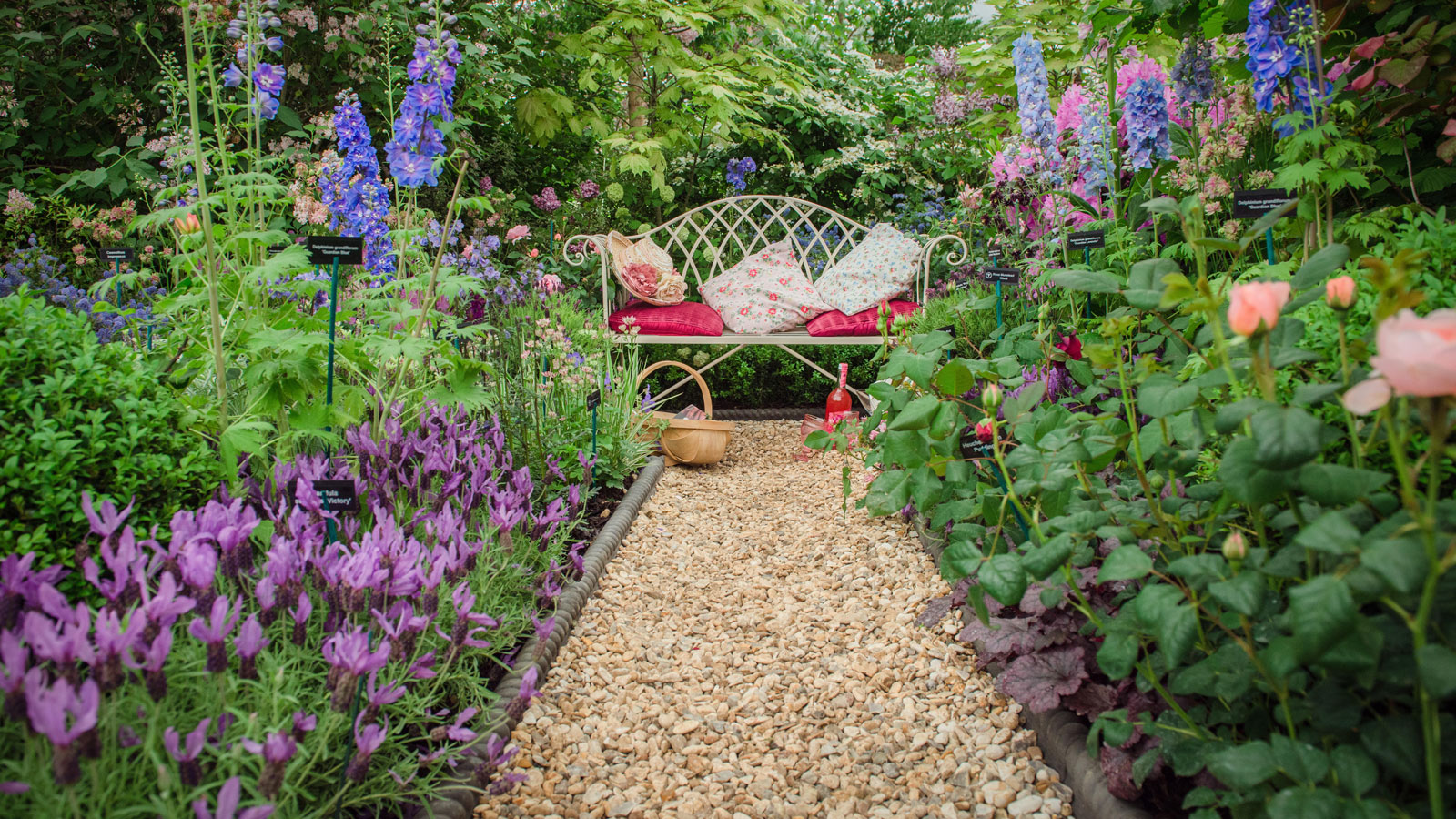
Make landscaping with gravel your go-to choice as it's the one material that works whatever your style. If you love modern garden design that's big on geometric shapes, gravel will neatly fill spaces. If your style is more relaxed combine gravel with loose planting of perennials and ornamental grasses or for a more naturalistic design.
You can also combine gravel with drought-resistant planting, xeriscaping and other dry garden ideas as it's a great fit. In fact many plants are happy to settle their roots straight into gravel. Any gaps will soon be colonised by self-seeding plants that will help your landscaping design evolve with very little input needed from you.
Discover more suggestions from our experts on how to include gravel in your garden landscaping ideas, for quick and easy transformations that look super professional.
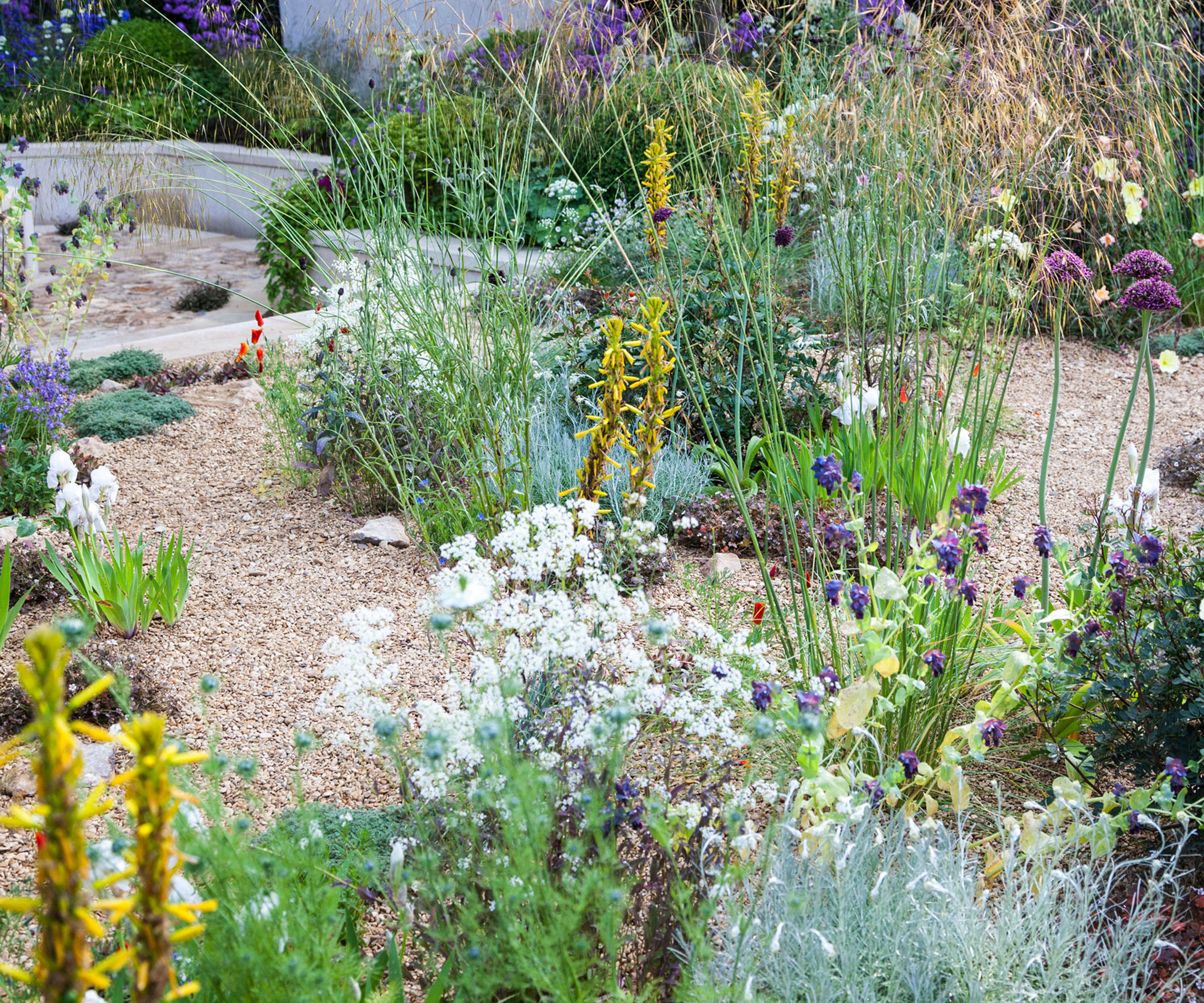
8 ways to integrate gravel into your landscaping
'Gravel is a very versatile material that has numerous roles in the garden,' says landscaping specialist Andy McLaughlin. 'Gravel is a practical choice, but can also be used to create beautiful, low maintenance, eco-friendly gardens without spending vast amounts of money.'
You can use small pockets or patches of gravel for a garden makeover that takes just a couple of hours or it can be integrated into a much bigger landscaping project. Whether you're aiming for some tweaks to style up a small area, or a stylish new look for the whole space be sure to factor landscaping with gravel into your design plans.
1. Create a Mediterranean-style gravel garden
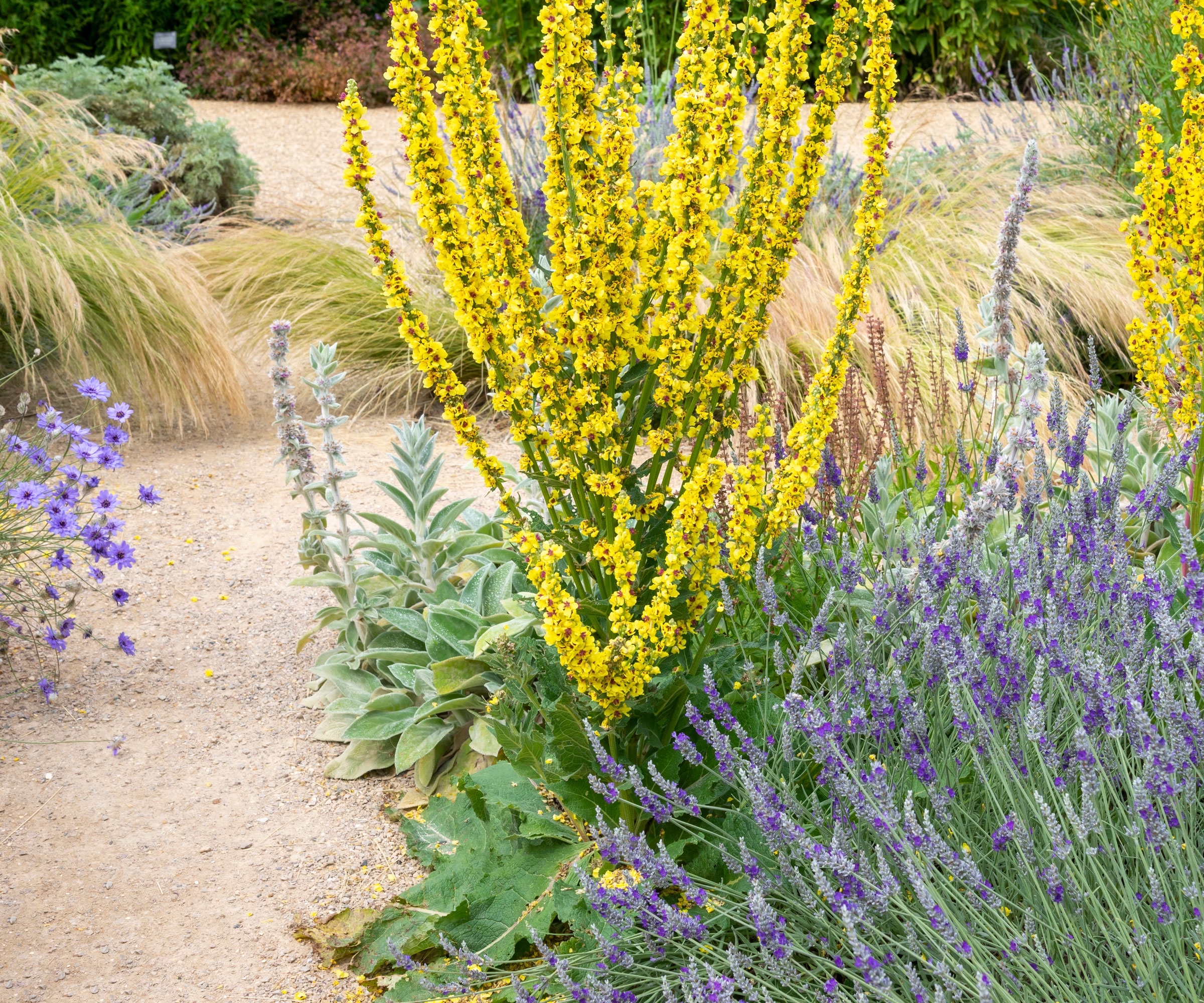
This is one of the easiest landscaping styles to create and once finished is a low-maintenance, water-wise choice too. Plant large areas of your garden with a relaxed mix of Mediterranean plants interspersed with gravel areas that let you wander through the plants to enjoy them up close.
There are plenty of different varieties that grow well in gravel gardens especially those that are tolerant of dry conditions and ones with gray, blue-toned or silver foliage. 'We like to use gravel as a ground cover in Mediterranean gardens around plants like olives, lavender, and globed boxwoods,' says California-based landscape architect Michael Clarke. 'Gravel can be used in so many different ways in a garden.'
Meanwhile some of our own favorites that work well with gravel include verbascum, santolina and salvia. Using gravel as a surface mulch also improves drainage and also helps retain moisture in the soil. Good for the plants and good for the planet.
2. Include gravel and rocks in dry garden designs
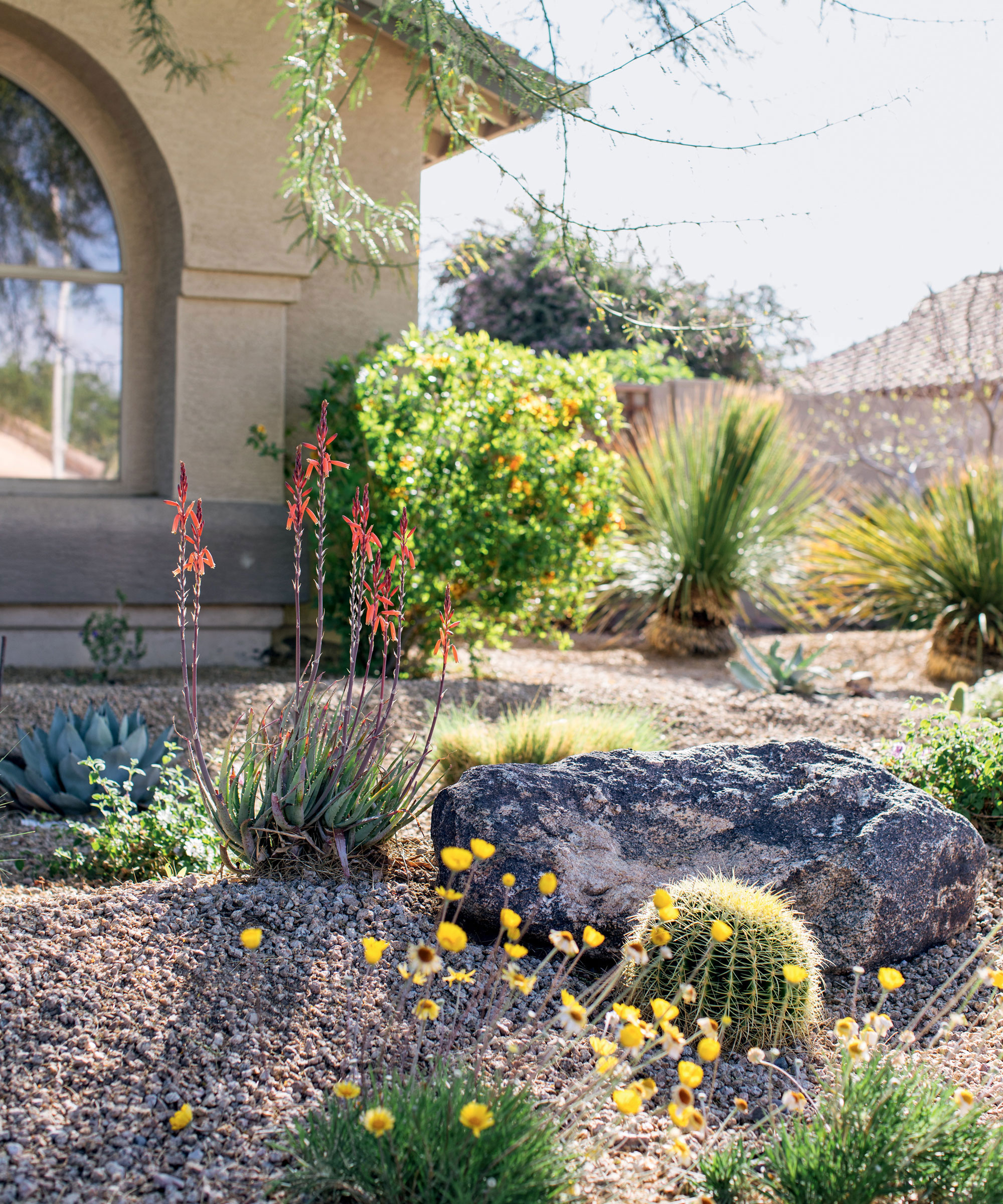
The balance between plant and stone is very characteristic of dry garden landscaping design. So if you're thinking of choosing gravel for your garden it's a good idea to mix in landscaping ideas with rocks too.
'In a low-water garden, rocks become architecture that balances plants,' says gardening expert Nan Sterman, author of Hot Color, Dry Garden, available from Amazon. 'Large boulders define contours and demark dry streambeds filled with gradations of cobble. These streambeds collect and hold water, so it has time to percolate into the soil where it is banked for access by plant roots.'
This means that combining rocks and gravel is a dream combo for landscaping in water-wise gardens. You can also plant directly into gravel with dry garden plants. It’s best to create mounds of soil to plant into then mulch with the gravel afterwards.
3. Add a naturalistic gravel path to your garden design
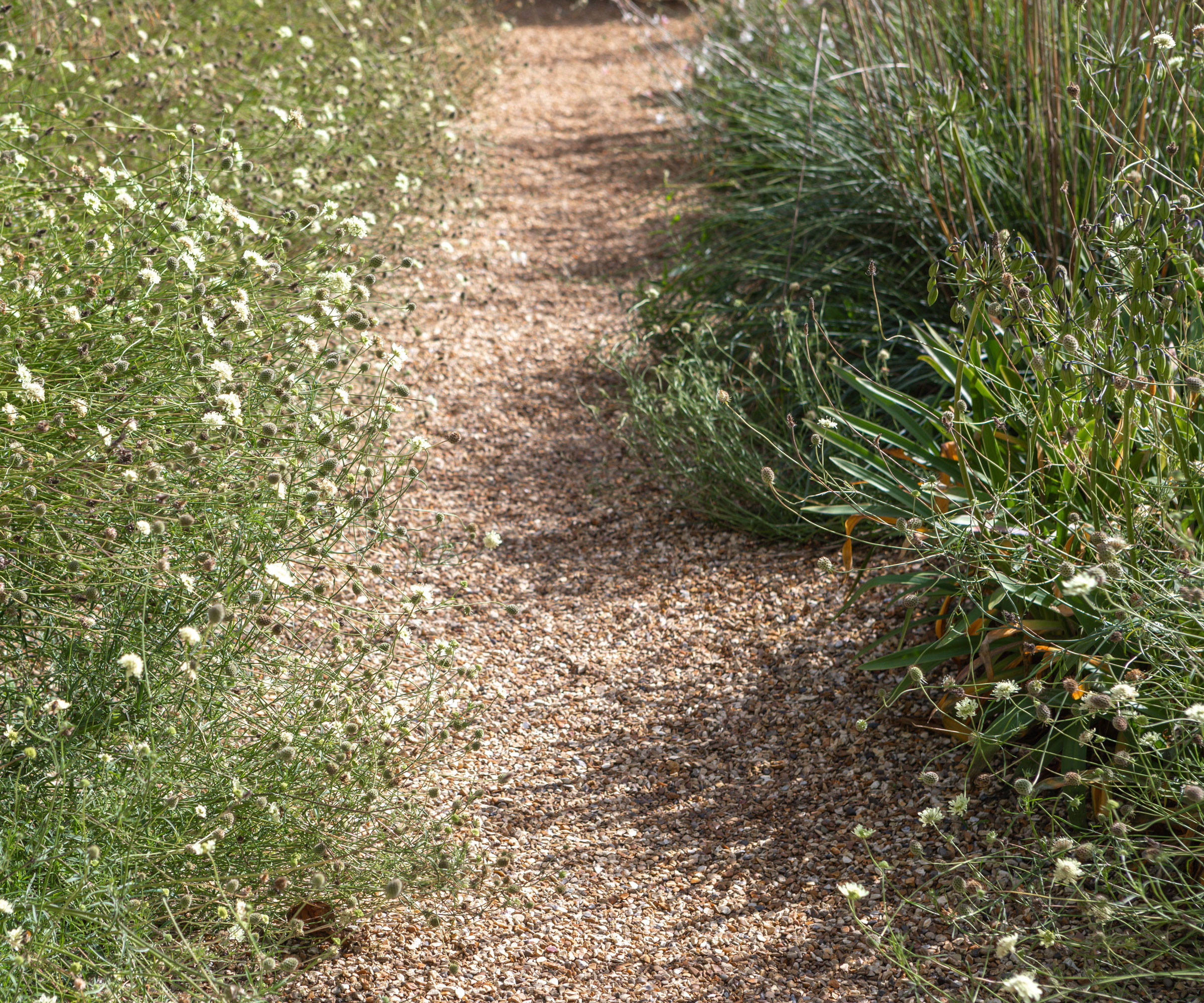
If you're looking for garden path ideas try using light-colored buff or tan gravel landscaping to create winding pathways throughout your garden. It looks aesthetically appealing, especially if you blur the edges with plants that spill over in soft waves.
'When planting next to a gravel path, I always recommend the first 1-2 feet on either side is planted with a groundcover,' says Nicolette McCary, co-owner with husband David at Seattle Sustainable Landscapes. 'You’ll want shrubs and taller plants set back so that they do not grow too deeply into the pathway and require constant pruning. When planting, always check how large the species will grow and think about the space the mature plant will need in a few years.'
One of Nicole's favorite groundcovers to border a gravel path is creeping thyme, a low-growing herb that spreads nicely and can handle being brushed against. She also recommends the low-growing evergreen kinnikinnick, as well as redwood sorrel and periwinkle.
4. Incorporate gravel ideas in firewise landscaping
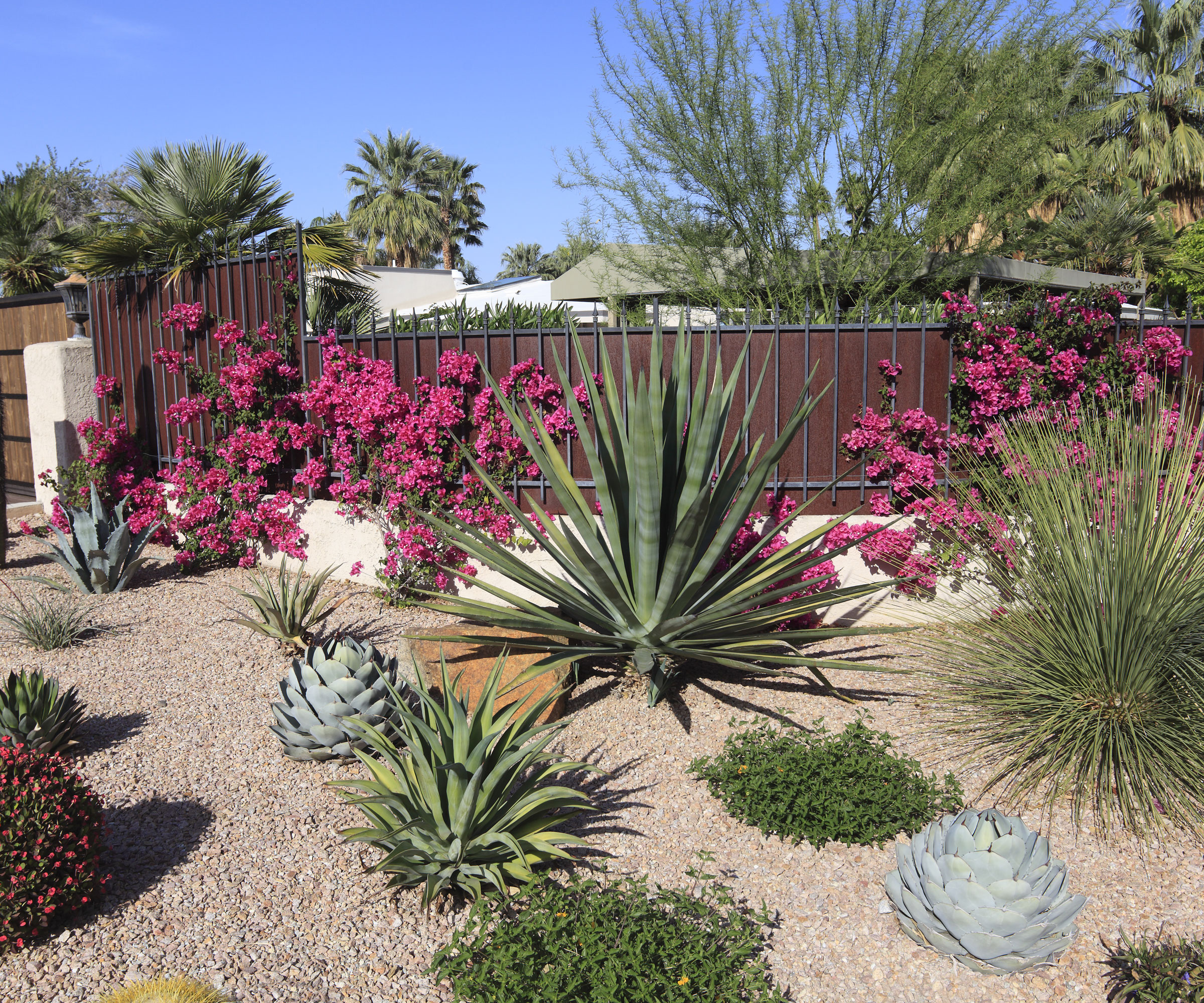
Gravel is a useful tool if you're looking into ideas for firescaping your yard. The goal of fire-wise landscaping is to reduce the intensity of fire and slow its advance as it nears the house. This means keeping the area next to the house free of anything that will burn, and designing planted areas further out that don't encourage a path for fire.
Gravel has a useful role to play if you're considering ways to protect your property. 'Clearing the area could involve the installation of a continuous band of nonflammable materials, such as brick or flagstone patios, a concrete apron, or gravel mulch, all around the house,' say Nora Harlow and Saxon Holt, co-authors of Gardening in Summer-Dry Climates: Plants for a Lush, Water-Conscious Landscape, available from Amazon.
Spacing plants farther apart gives them room to show off their natural form and provides them with better air circulation, and noncombustible gravel mulches conserve moisture and make it much easier to remove weeds. 'Separating planted areas with wide gravel paths simplifies maintenance while making it possible for visitors to stroll easily through the garden.'
5. Improve the look of your vegetable garden with gravel
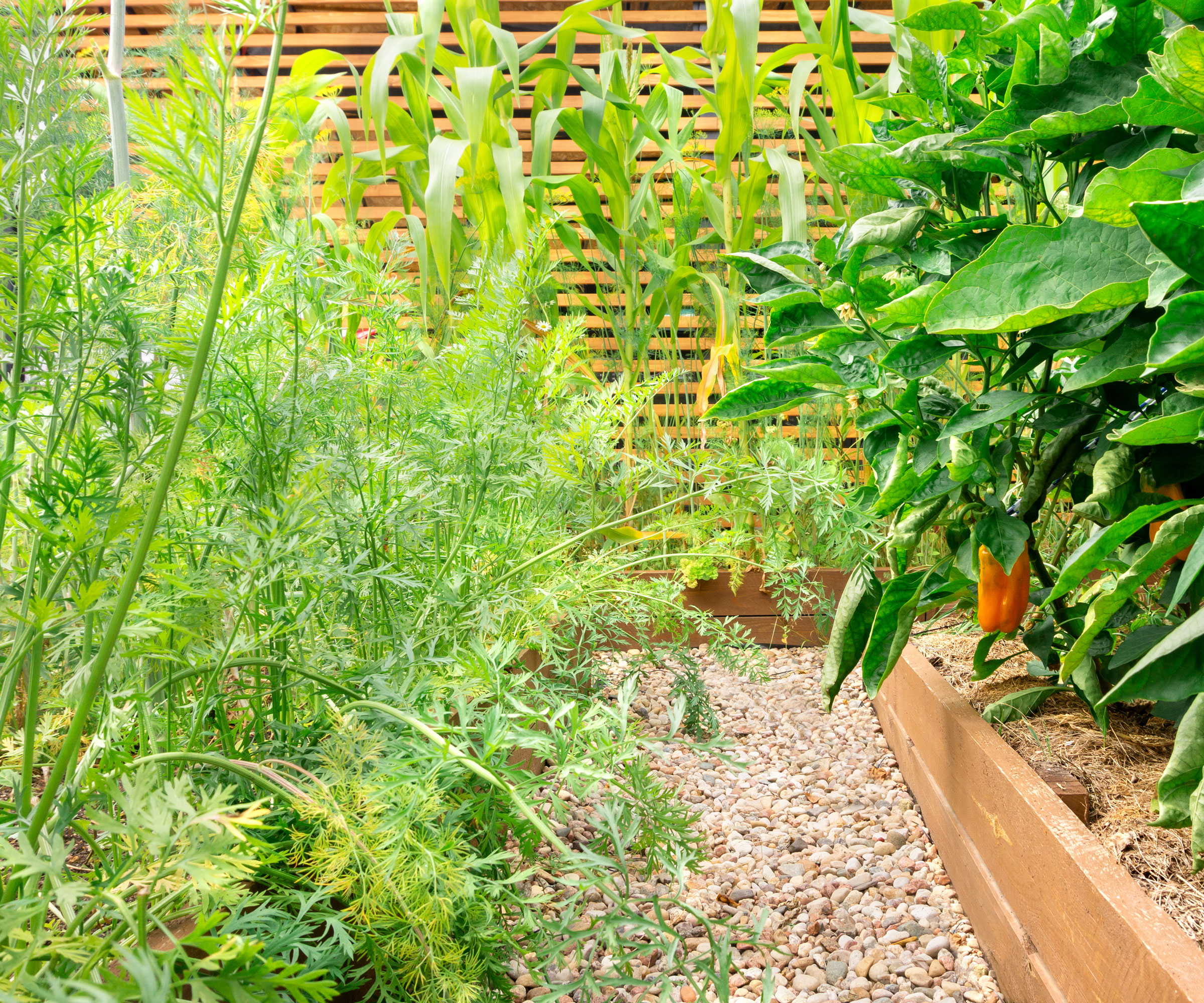
A popular and aesthetically pleasing way to suppress weeds is to use gravel on the pathways as part of your vegetable garden ideas. 'We like using gravel around raised garden beds as it makes a great organic walking path around vegetable gardens,' says Michael Clarke.
Fine-grade stones are perfect for spreading around plants too. Gravel can also be used as a mulch to retain water in the soil. It conserves the heat in the soil too, helping plants to survive winter.
'First level the area and install weed barrier fabric prior to laying the gravel,' says organic gardening expert Resh Gala, author of Vegetable Gardening Made Easy, available from Amazon. 'Gravel is easier to walk on when compared to wood chips, it facilitates good drainage, and the best part is that it comes in a variety of shapes, sizes and colors to complement the look of your garden.'
There is a choice of shades including cream and gray, as well as black basalt and red granite, so there's plenty of opportunity to customise an attractive look for your vegetable garden.
6. Mix up gravel and pavers in your hardscaping

Combining gravel and pavers is a great way to break up big sections of hard paving for gravel patio ideas, as well as driveways and paths. 'It's a great driveway substitute for concrete and works amazing in outdoor dining settings, such as under a steel-framed pergola,' says Michael Clarke. 'Another option is to use gravel between large paving stones, instead of mortar, for a more organic garden feel.'
When landscaping with gravel choose the color carefully to complement paving. The garden designers' favorite is pea gravel as the end result always looks so sleek. The small stones are smooth and rounded, and come in a choice of natural colors, including shades of cool gray and crisp white.
If you're concerned about the gravel shifting around and looking messy try using a binder like this one from Amazon recommended by Michael. An alternative is gravel stabilizing grids to keep the gravel in place.
'Incorporating different materials within a garden is often more important than just creating the final desired look,' says Andy McLaughlin. 'Used wisely, these products can not only create an aesthetically pleasing outcome, but materials like gravel can also help with drainage in addition to being decorative.'
7. Choose gravel to enhance a modern design
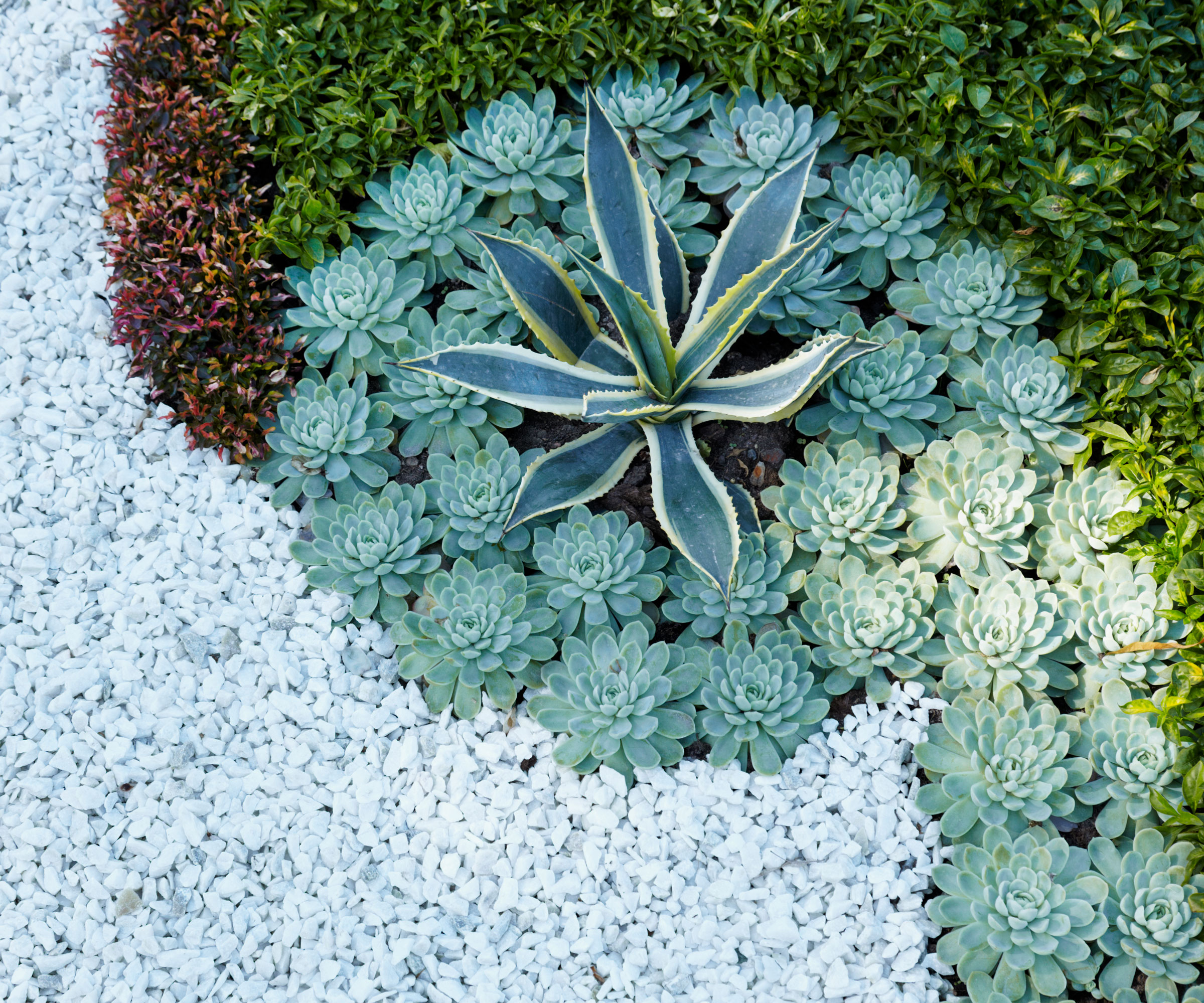
Gravel can be used in a multitude of ways for contemporary-looking landscaping and modern garden ideas. In minimal designs it works well in a more structured, uniform layout to keep lines clean and modern. Simplicity is everything with this type of landscaping with gravel.
Try using gravel as a top dressing to complement perfectly placed plants in geometric beds. Or use gravel to fill the gaps in between rectangular slabs to add texture and interest. If you love the look of statement plants in oversized containers try adding a layer of gravel to the surface for a crisp finishing touch.
Keep gravel contained by using a retaining edge to stop it spilling out and spreading where you don't want it. This will need to sit slightly higher than the finished gravel level.
8. Light up gravel to show it off in the best way
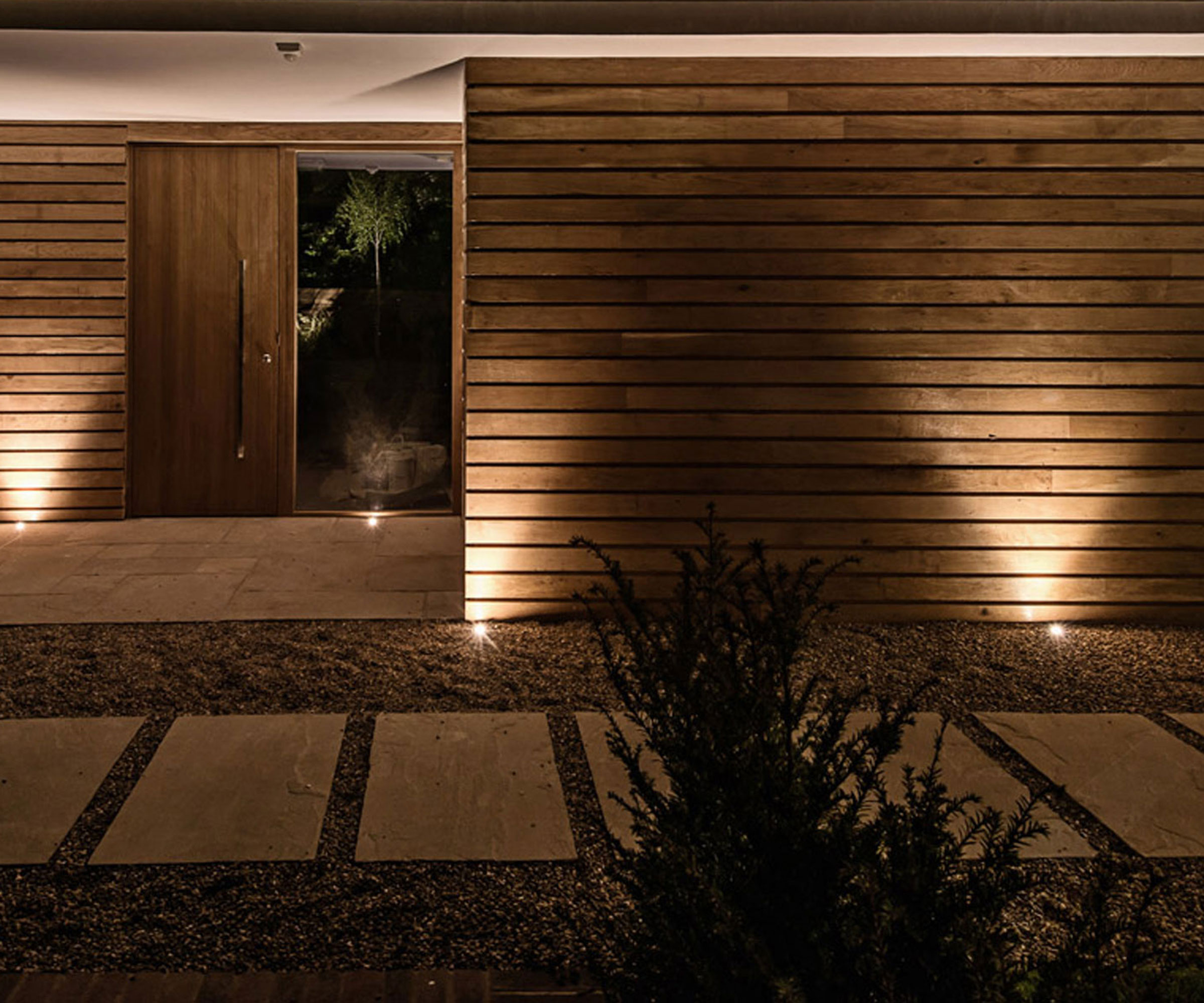
At night time switch up your landscaping with gravel ideas by using washes of light to create a soft and welcoming ambiance. Lights can be placed strategically to enhance the look, pointing downwards so the gravel is illuminated to create a stunning effect as part of your garden lighting ideas.
Gravel tends to be used mostly for pathways, so appropriate lighting is important to guide the way. If gravel is laid next to a vertical surface, like the side of the house or garden wall, use uplighters. Alternatively, if the gravel is in a more open setting, place low level outdoor ground spotlights in amongst the planting and other areas that frame the gravel.
If you are interesting in using lighting as part of your landscaping with gravel ideas a garden designer will be able to help you plan it.
FAQs
Where should you not use gravel in your landscaping?
There are occasions when it's not suitable to use gravel in your landscaping. One of the main problems is if your yard has lots of trees.
'We typically recommend against using gravel when there is tree cover, as this means that organic matter will continually fall on the gravel,' says David McCary of Seattle Sustainable Landscapes. 'This actually makes for very difficult maintenance as it is very hard to remove the organic matter that gets integrated into the gravel. Then the seeds will be implanted on top of any weed barrier that is underneath the gravel. Once established weeds are very difficult to remove in gravel.'
Make sure you have an environment that will support gravel. If you do then it's a beautiful, low-maintenance and sustainable choice. Consider your yard, your climate, and your purpose when deciding if gravel is the ideal solution for you.
Once your landscaping with gravel ideas are up and running you'll need to know how to clean gravel to keep it looking fresh, as well as how to remove weeds from gravel to keep on top of this pesky problem and ensure your gravel stays pristine.







